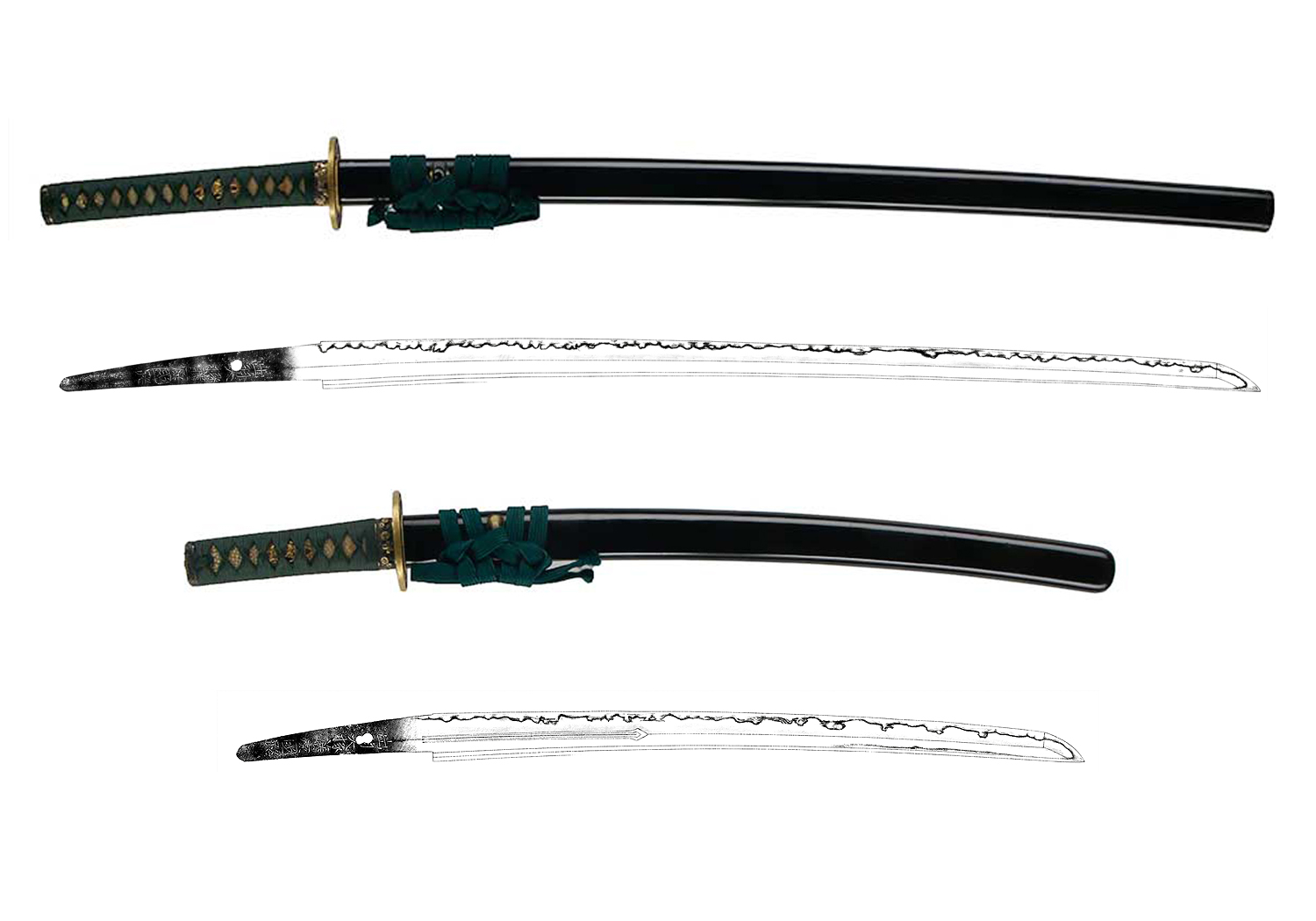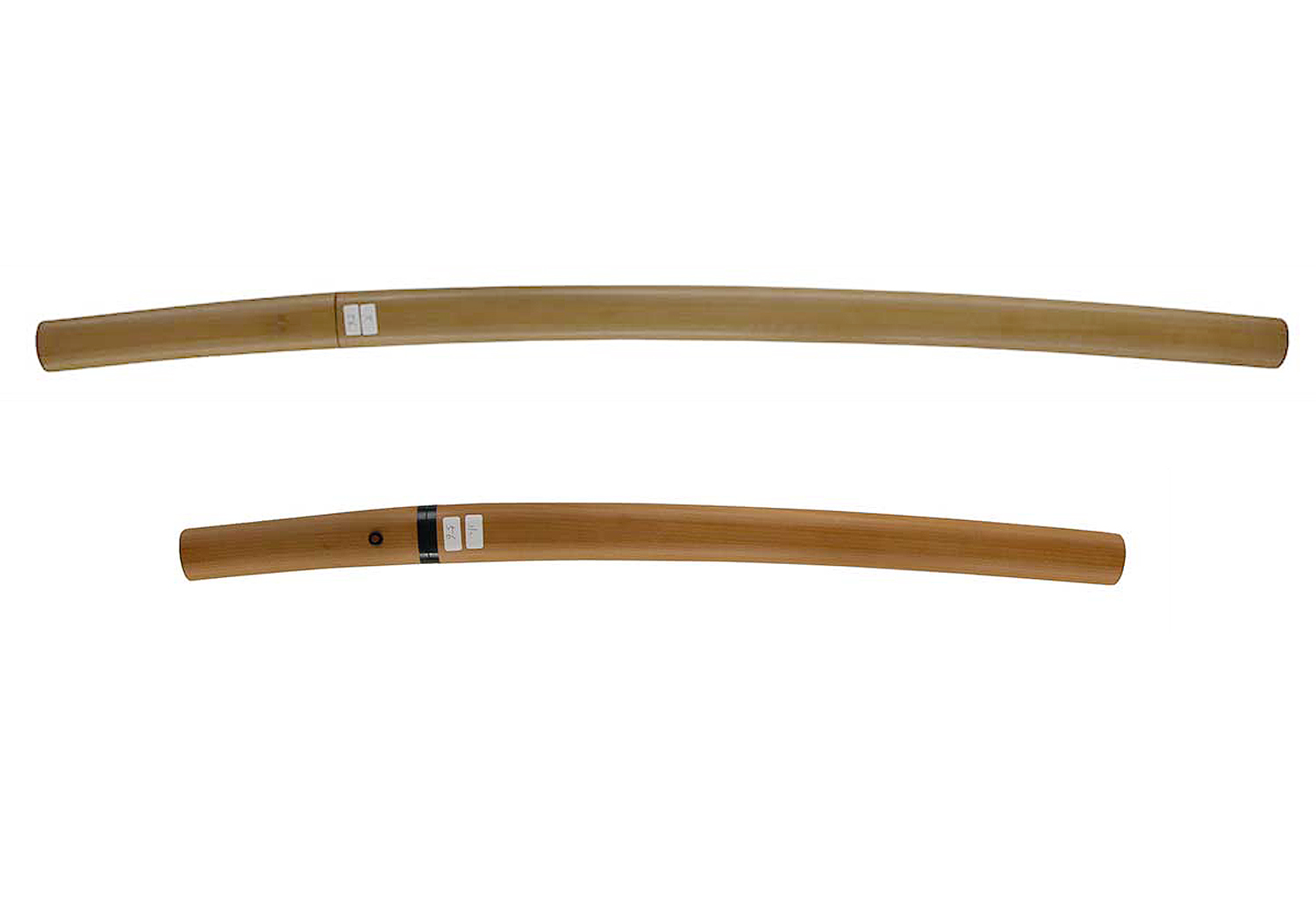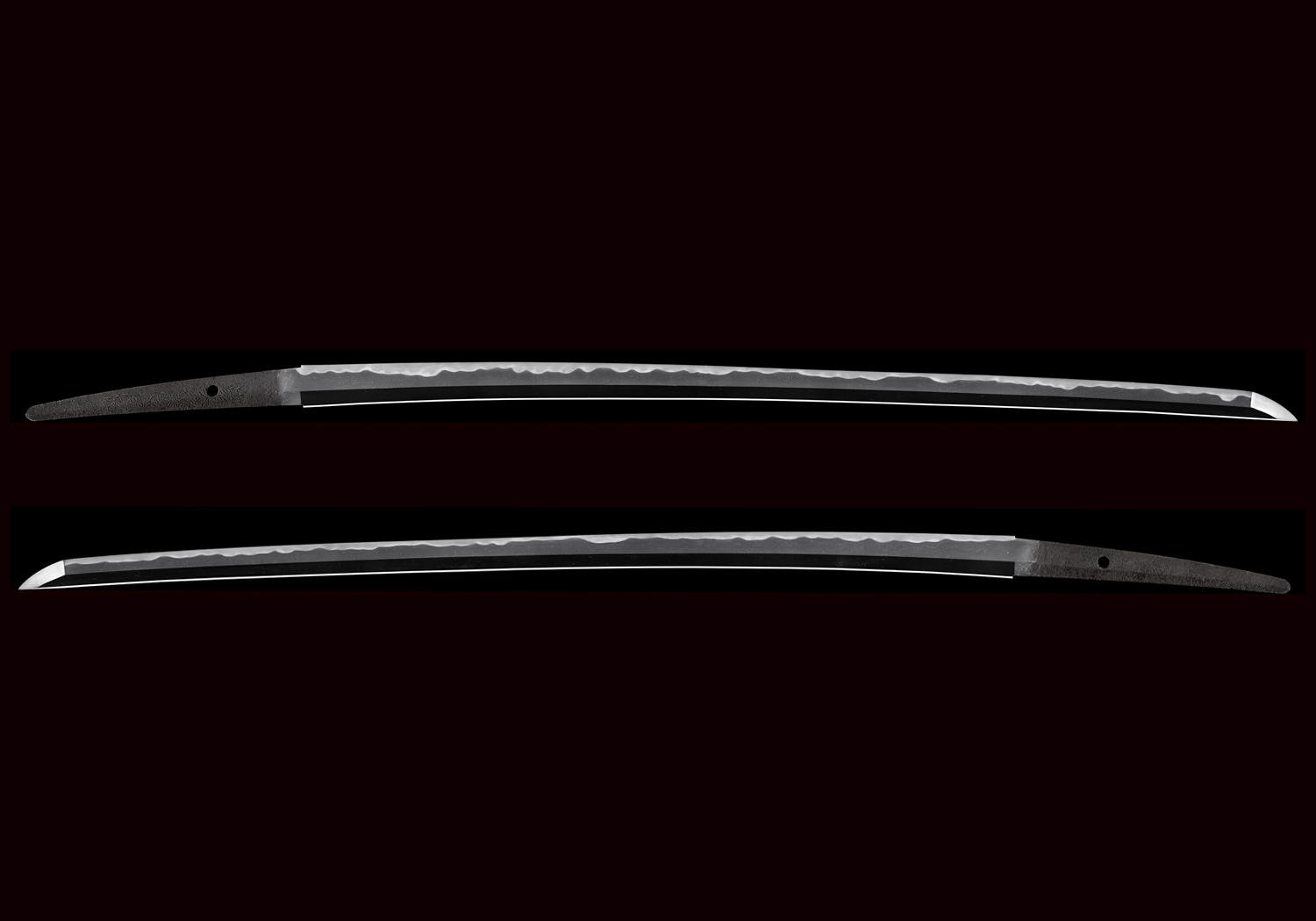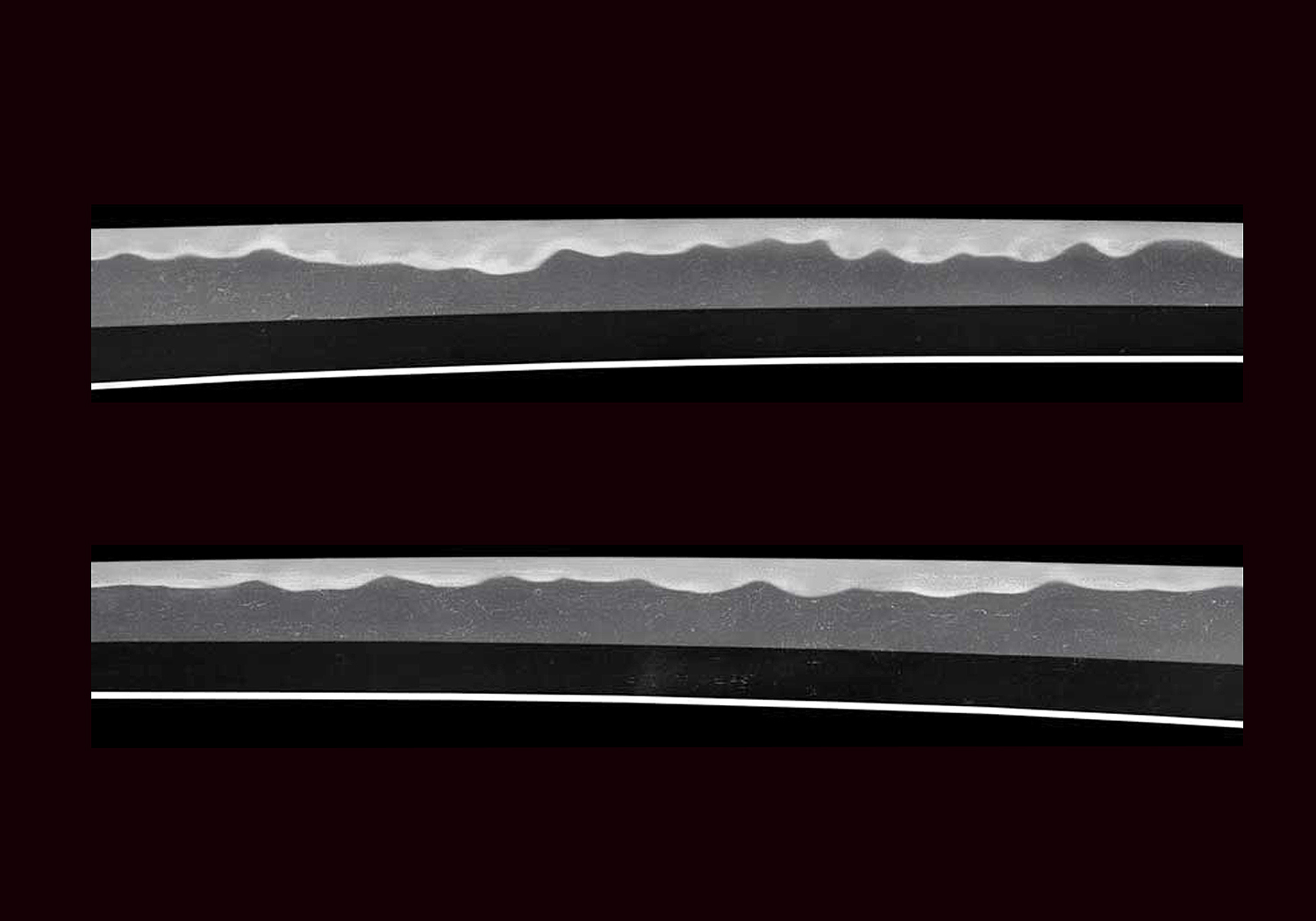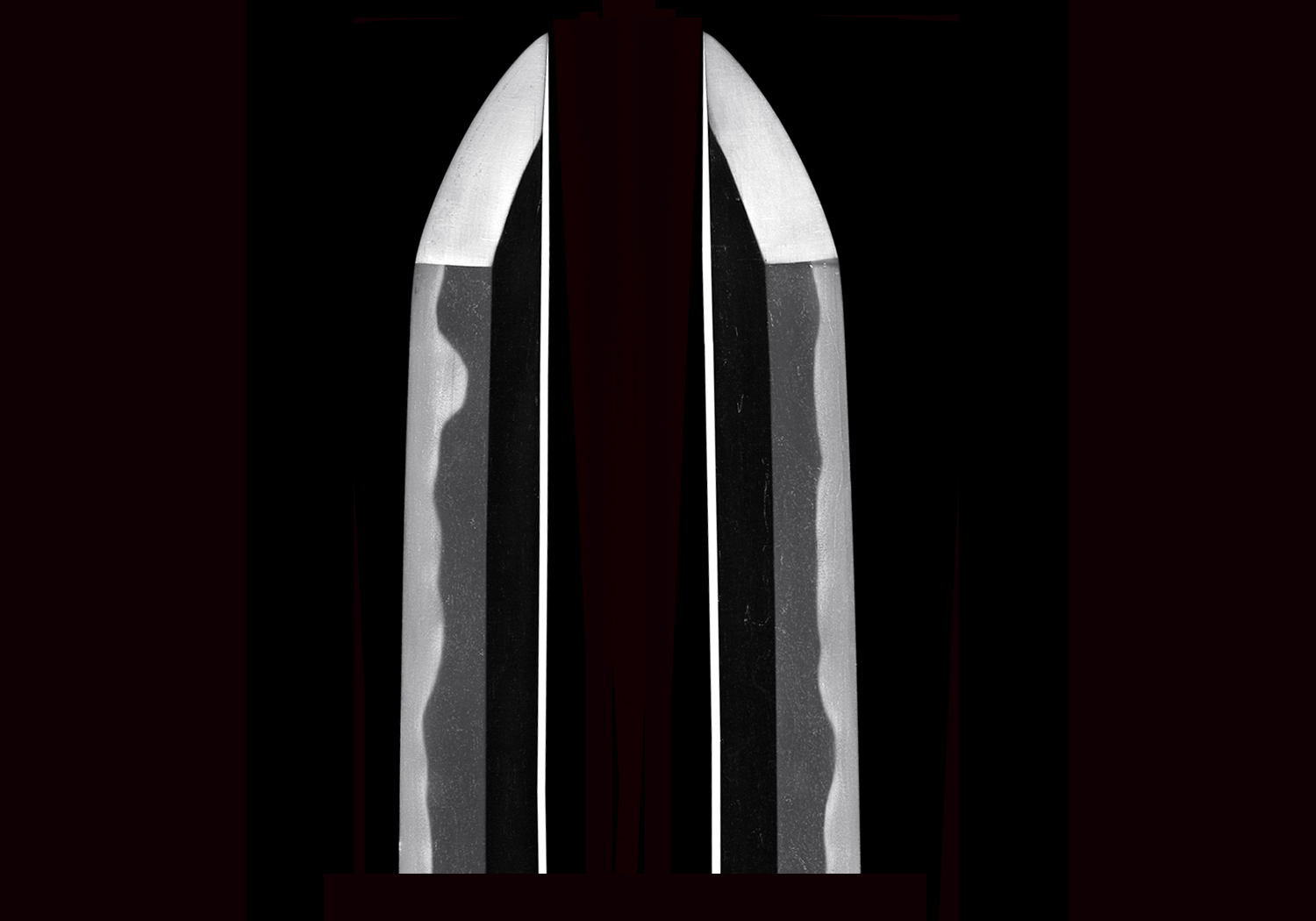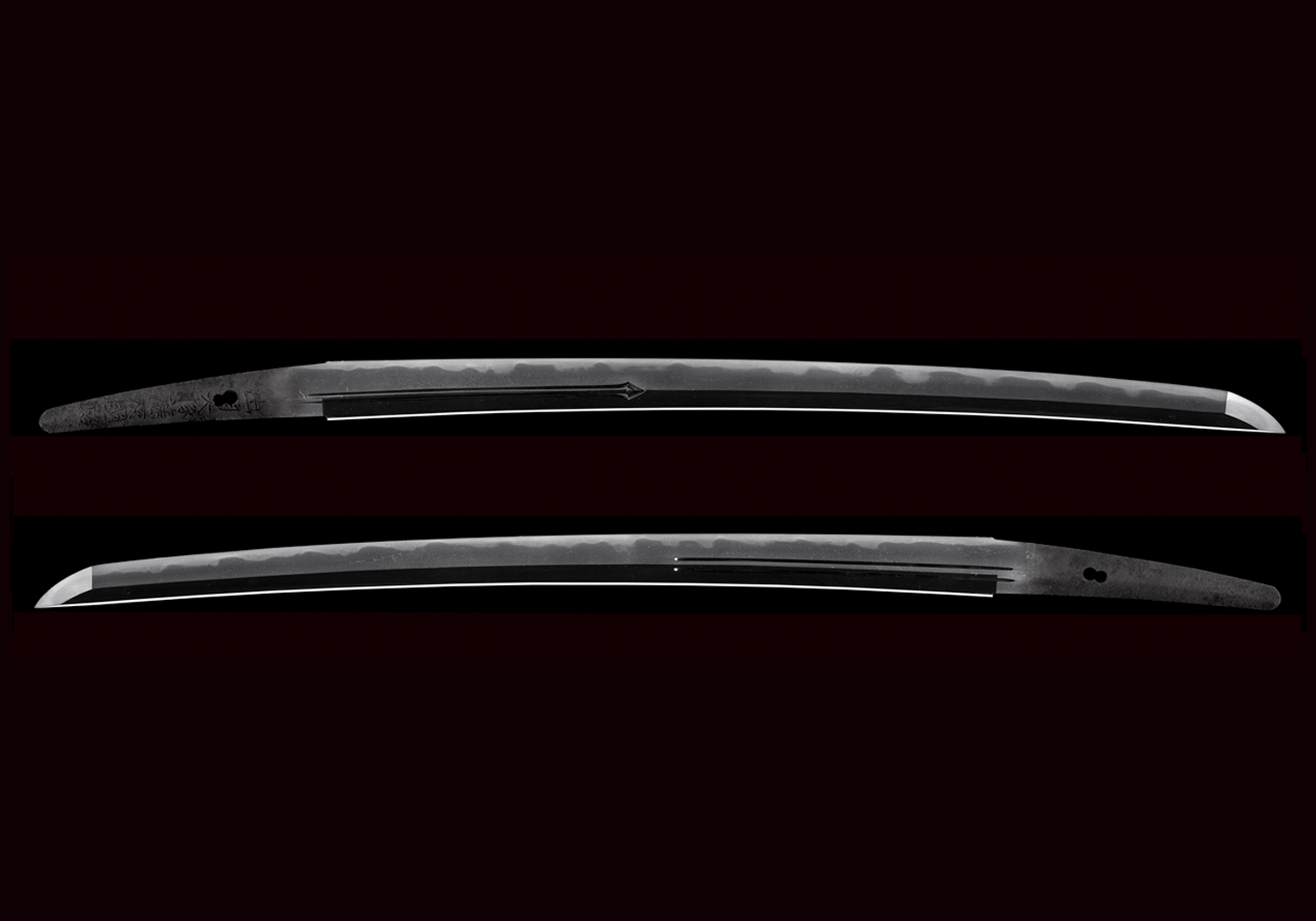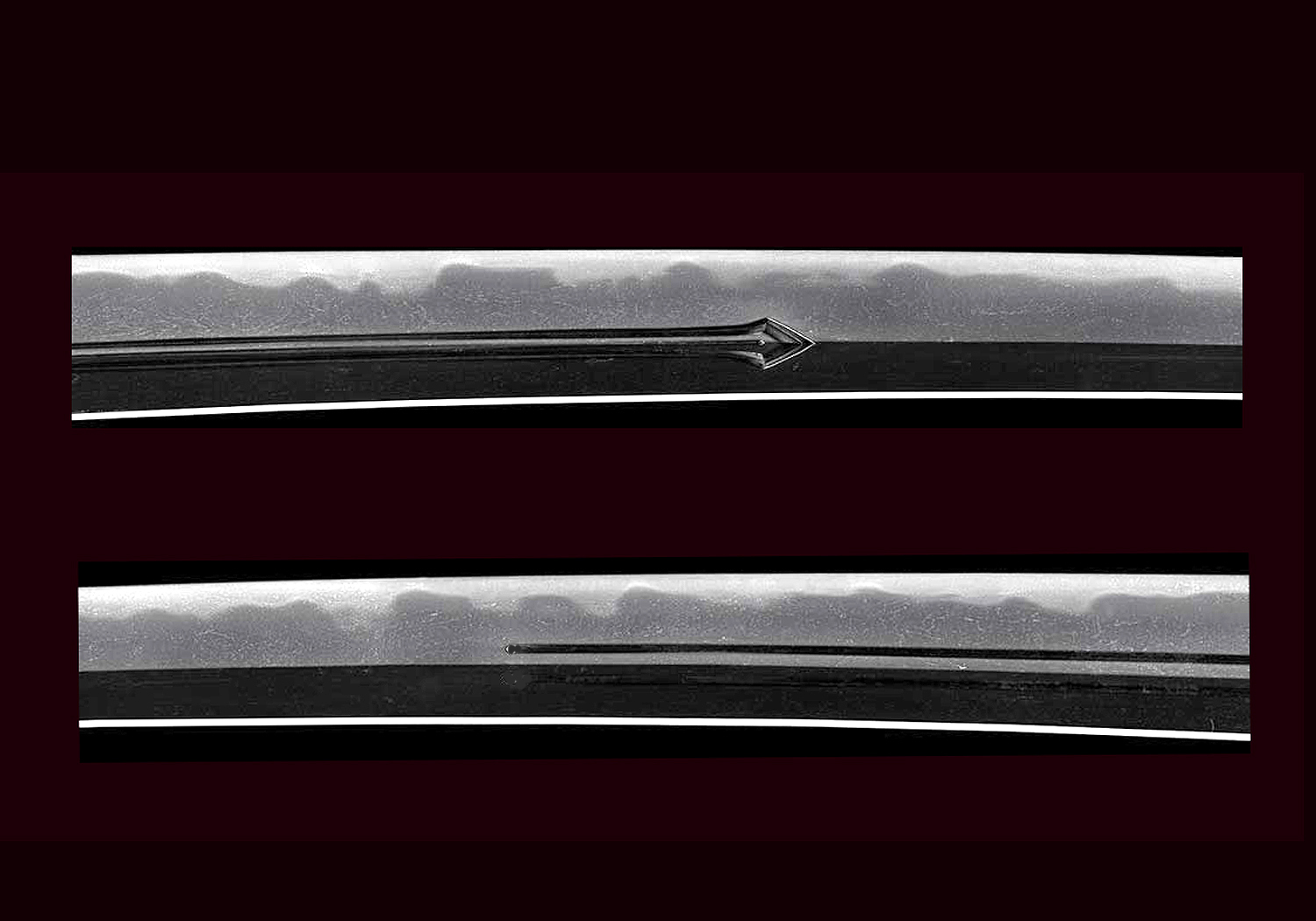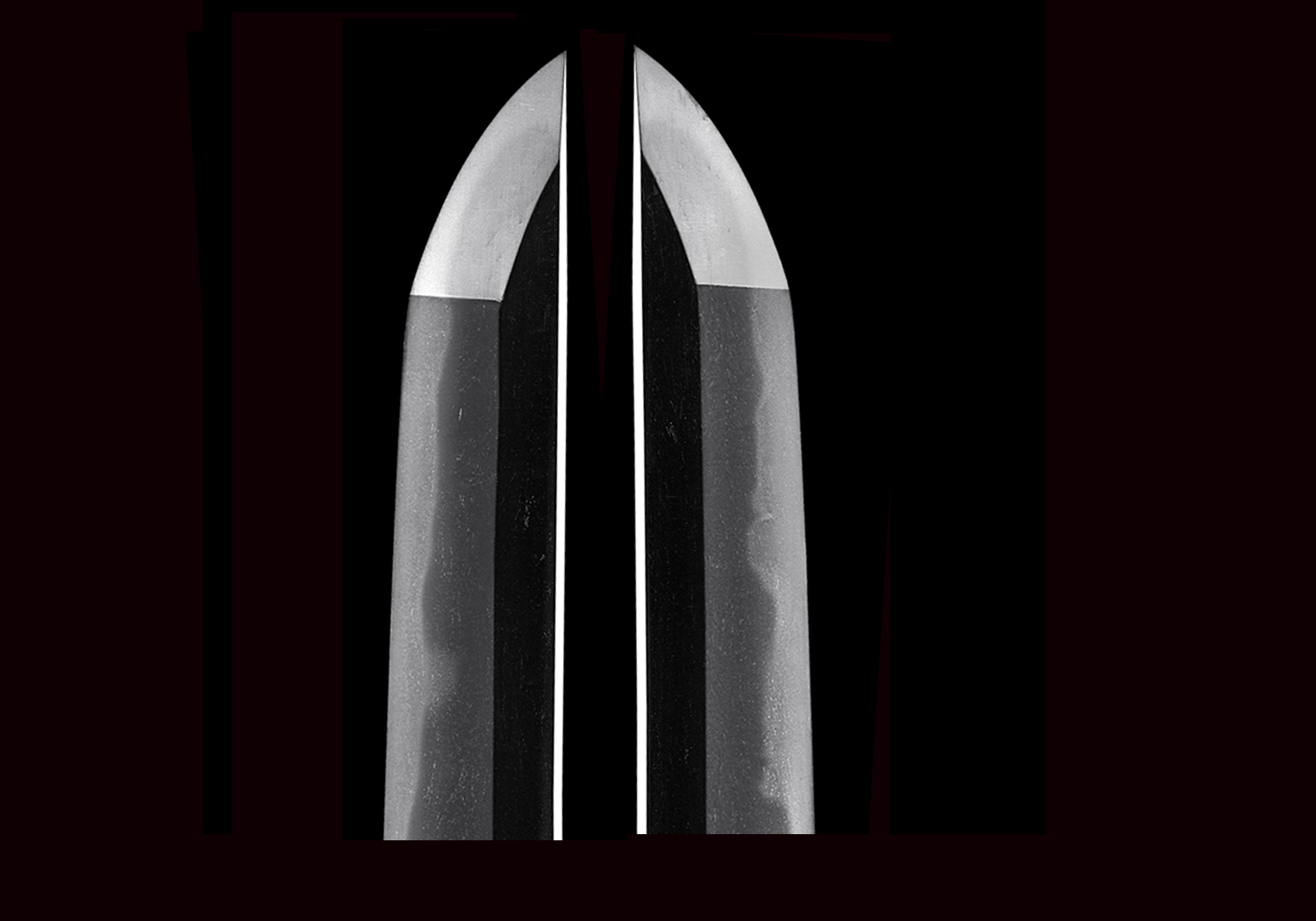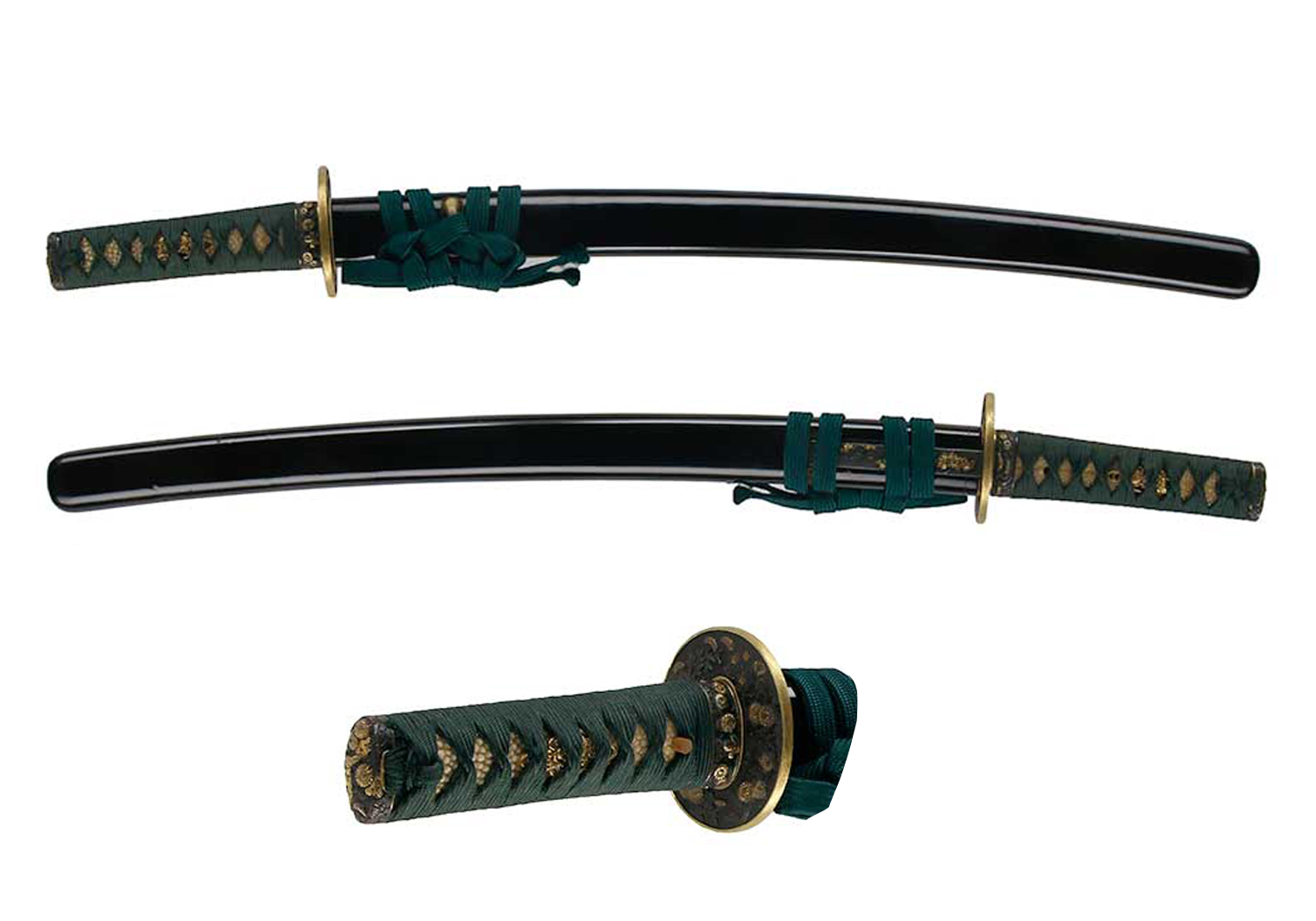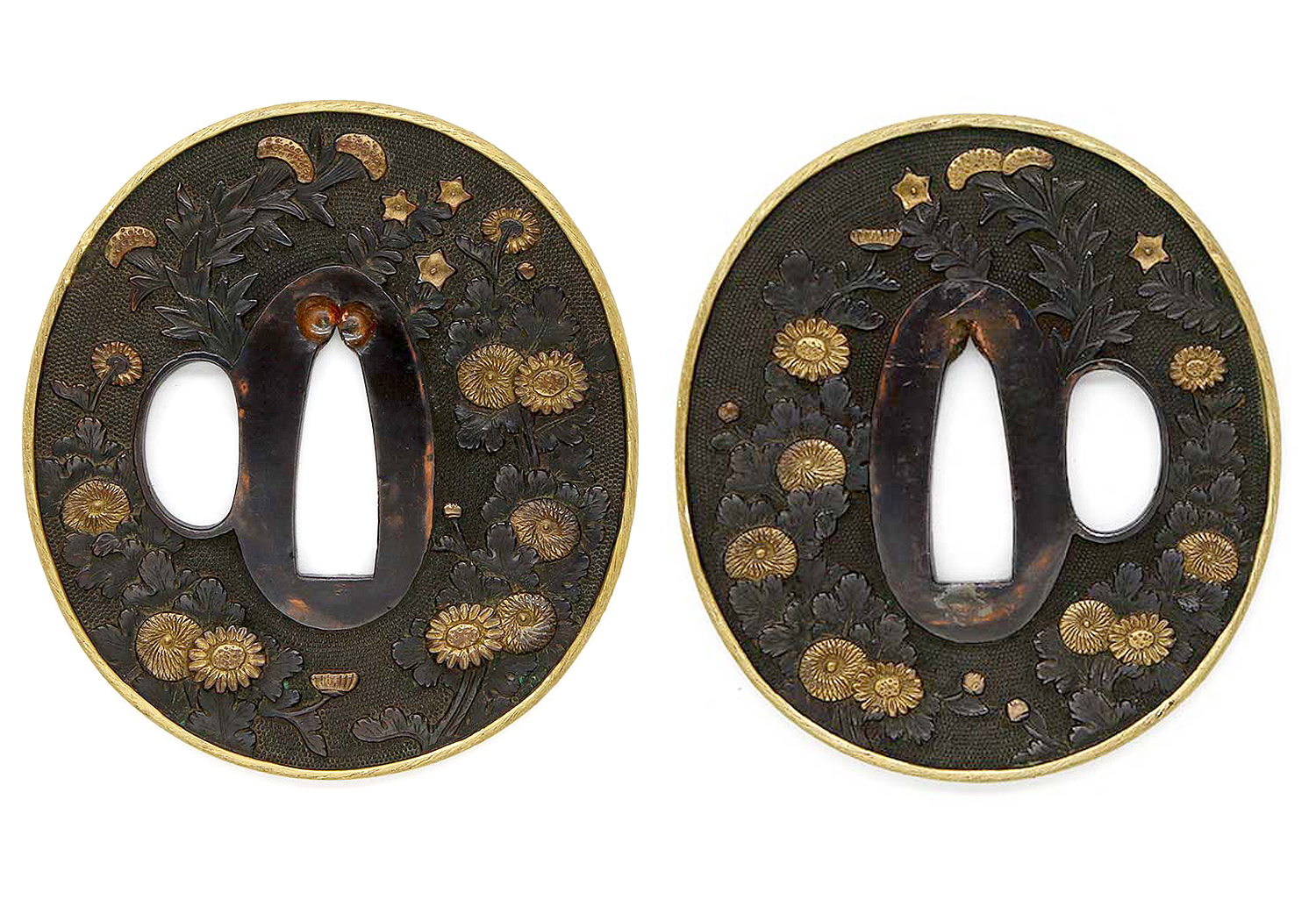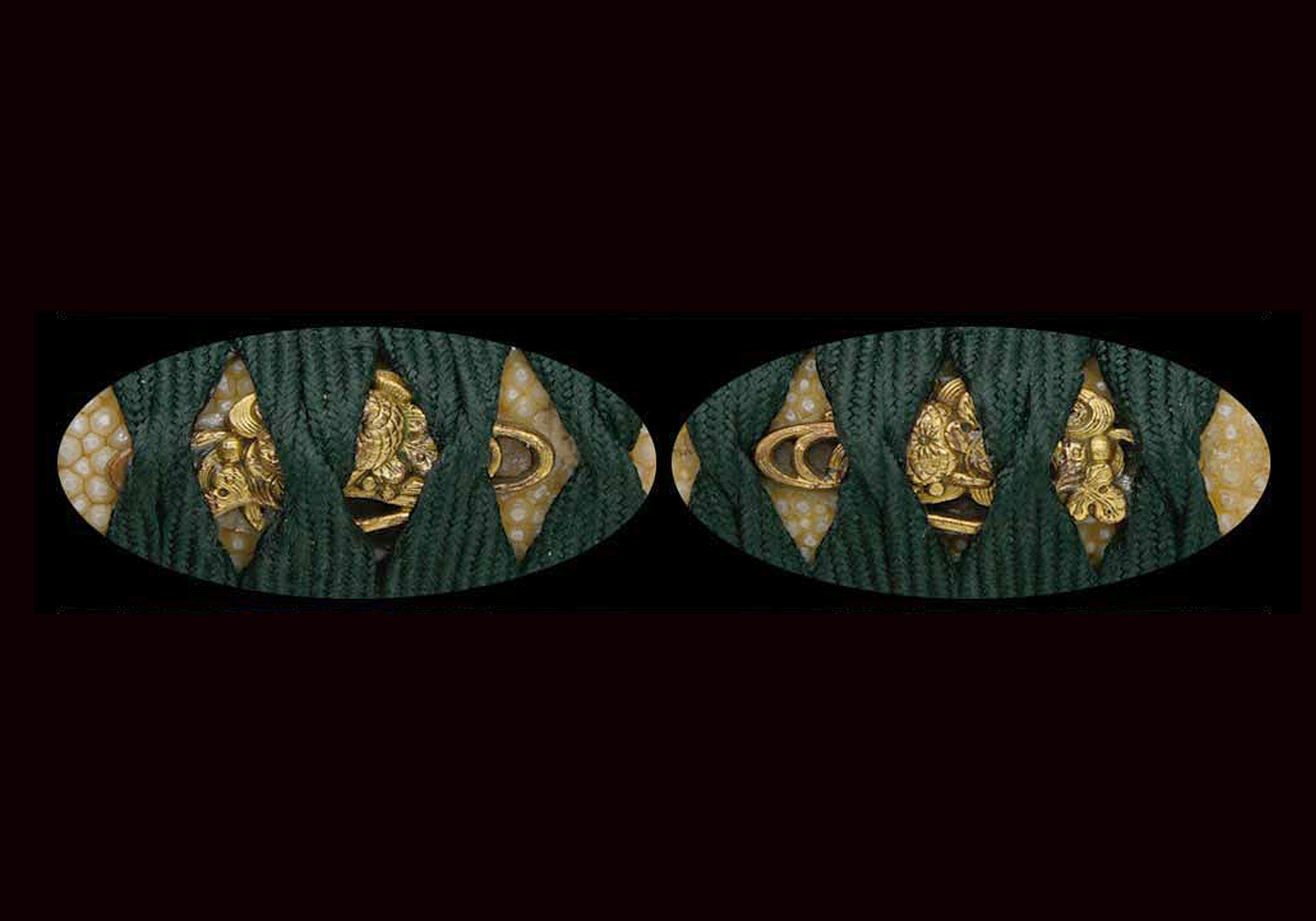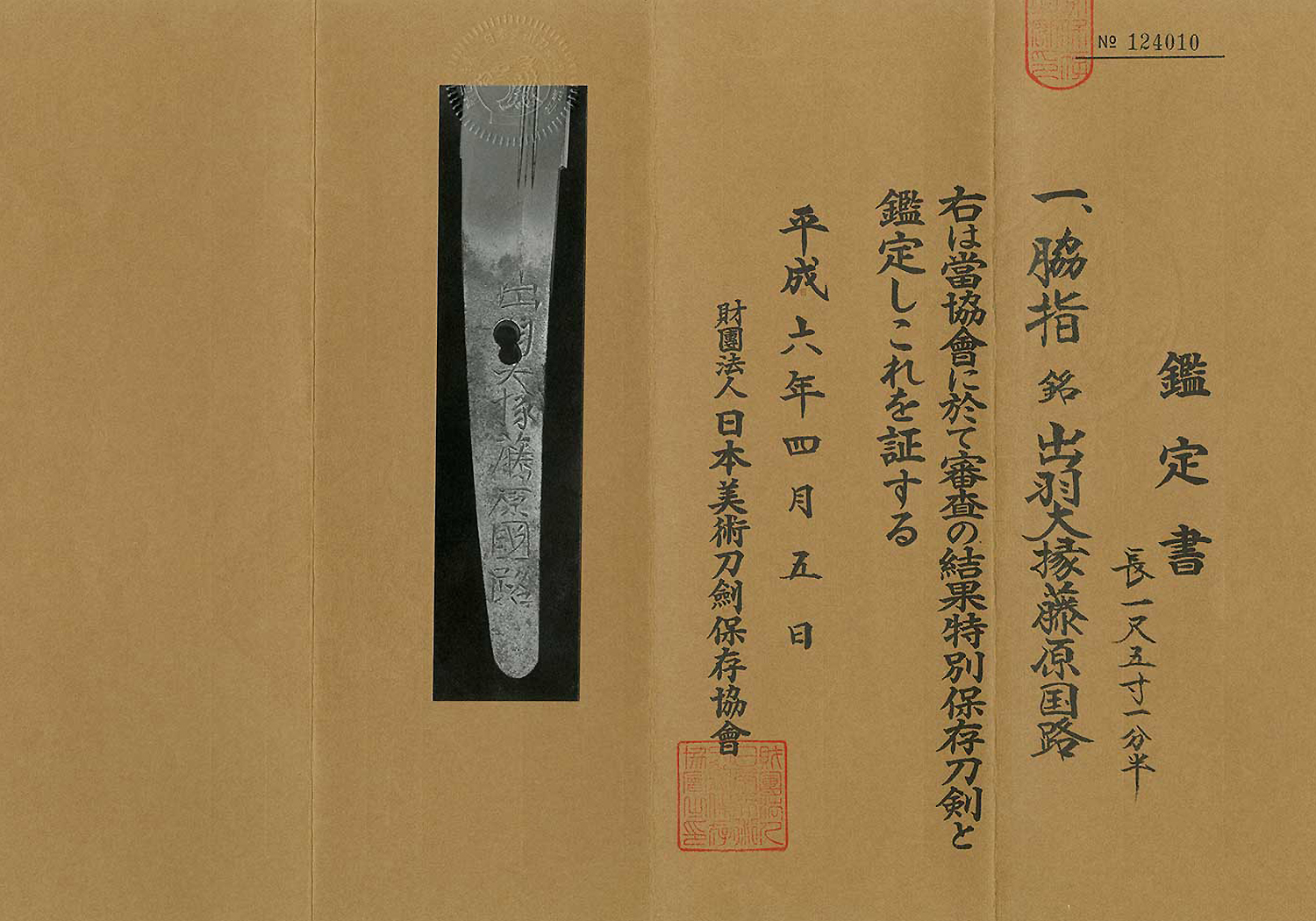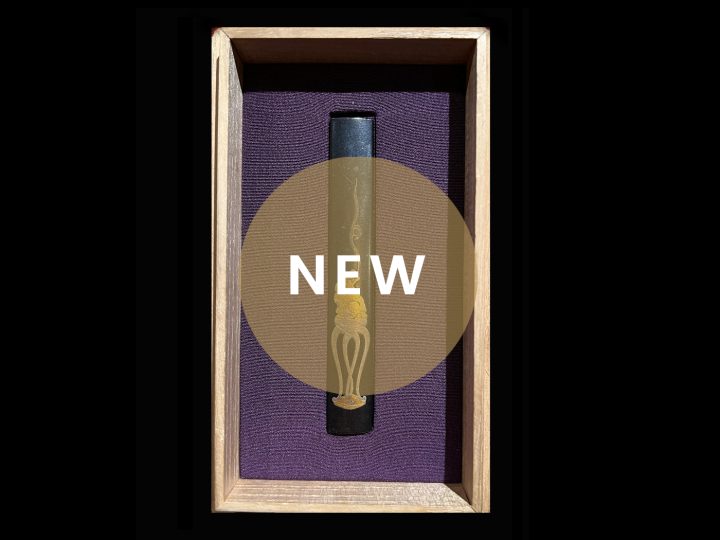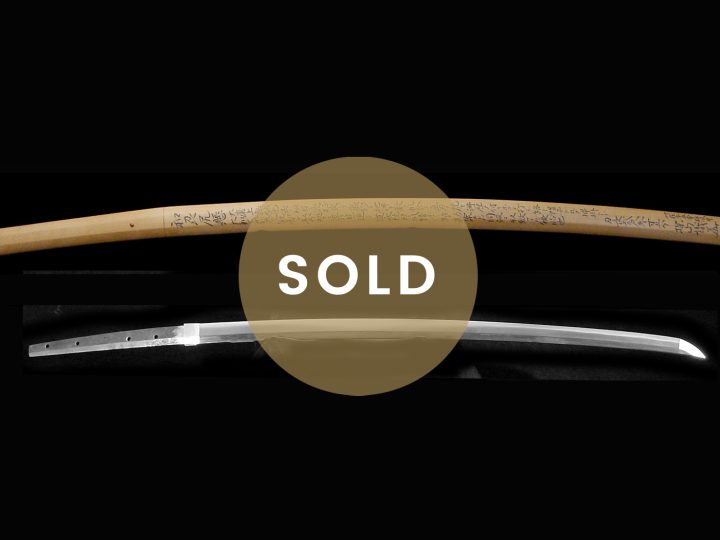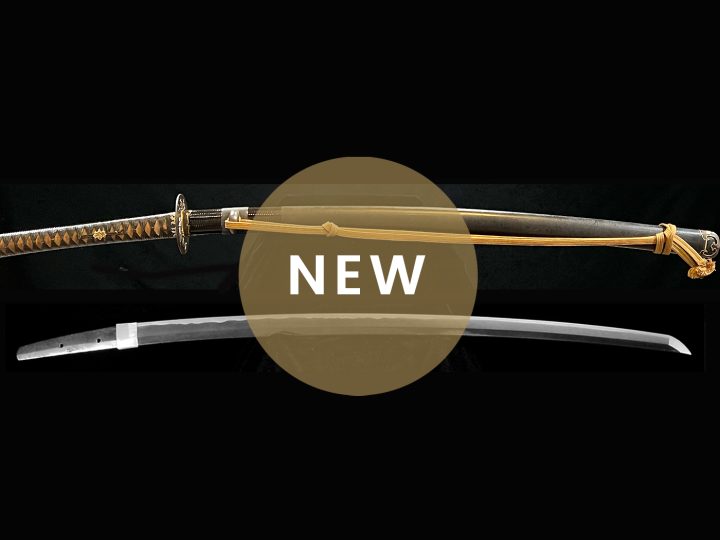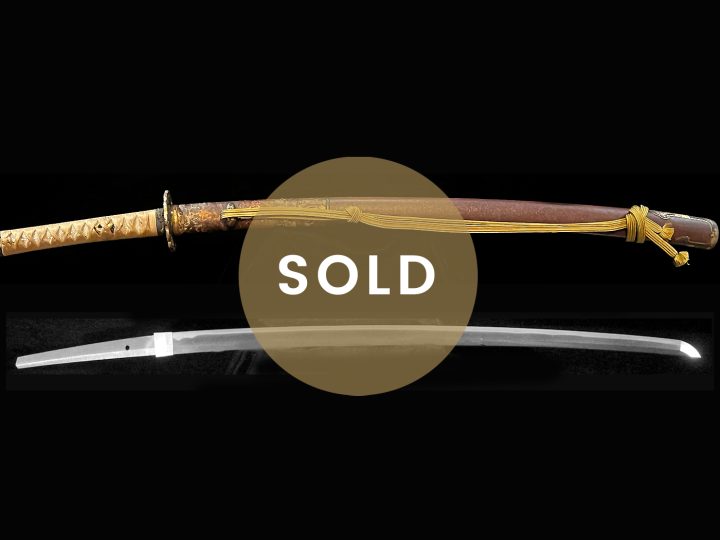
While it is firmly established in many reference books that Kunimichi(國路) was a student of Horikawa Kunihiro (堀川國廣), no records have been found detailing either his birthplace or his genealogy. However, thanks to the dated examples of his work that remain, we are able to piece together some biographical information about Kunimichi.
There is a sword by him dated Keian san-nen Kanoe-Tora Ku-gatsu Kichijitsu Shichijû-go-sai Saku (慶安三年庚虎九月吉日七十五才作). This translates as having been made in the fourth year of Keian (1651) at the age of 75. There is another dated Keian Go-nen Go-gatsu Shichijû-shichi-sai Saku (慶安五年五月七十七才作). This means made in the fifth month of the fifth year of Keian (1653) at the age of 77. From examples such as these we know that he was born in the fourth year of Tenshô (1576) and he died sometime after the second year of Kanbun (1662) which is the last known dated sword. It is dated as having been made in the second year of Kanbun (1662) when he was 87 years old.
Kunimichi’s workmanship displays the widest range of variations of all of Kunihiro’s students. It shows a great deal of influence derived from the Mino tradition. This is especially so with the hamon in the bôshi, it shows the Mino characteristics of notare and the tip in togari-gokoro followed by kaeri. These characteristics are common in the works of the swordsmiths coming out of the Mishina school. This bôshi is known as the san-pin or Mishina (三品) bôshi.
It should also be noted that Kunimichi’s earliest dated example is a tantô that is inscribed Heianjô Kunimichi (平安城國道) and dated Keichô Jûsan-nen Ku-gatsu Kichijitsu (慶長十三年九月吉日). This translates as being made on a lucky day in September of the thirteenth year of Keichô (1608) by Heianjô Kunimichi.
It should be noted, however, that in this example of his early work, the kanji character used for “michi” was different from the commonly known (路) but was another kanji character with the same reading but written (道). This suggests common ties in his name and the names of the Mishina smiths such as Kinmichi (金道) and Yoshimichi (吉道). Further, there is the fact that some mei in Kunimichi’s other works include the kanji, Rai, (来) as in Dewa-daijô Fujiwara Rai Kunimichi. This character, Rai, is also used by some of the Mishina smiths. This seems to add credibility to the theory that Kunimichi, though belonging to the Horikawa school, had some connection with the Mishina school at the same time. The fact that he was the only one of the many students of Horikawa Kunihiro who incorporated the Mishina stye bôshi into his works further advances this theory.
There has long been a theory expounding the possibility of Kunimichi being represented by two generations of smiths. Certain facts, however, are against this such as Kunimichi’s longevity, the long span of his productive period, and that in his very last years some swords were produced by his students having Kunimichi’s mei executed by the actual makers under Kunimichi’s authorization. This seems to make it more appropriate to accept the common theory of just one generation being represented by this professional name.
Kunimichi’s works are unique in containing both quiet and somewhat unclear areas as well as outstanding areas admirably sprinkled with nie grains. This creates a rather inconsistent style of tempering and is an unmistakable trait of Kunimichi.
Kuinimichi worked in both the Keichô Shinto shape and later in the Kanbun Shintô shape, but both shapes contained the unmistakable characteristics of the Horikawa school. Among the Horikawa smiths, Kunimichi enjoyed the most diverse styles of workmanship. He did well in almost anything except the Bizen style of sword making. His best works are considered to be his Sôshû style ones. They will have a hamon that is a florid midare formed in the Shizu style with a strong nie presence forming kinsuji and sunagashi in the ha reproducing the Sôshû tradition.
It is thought that Kunimichi probably received the title of Dewa no Daijô (出羽大掾)in the nineteenth year of Keichô (1614) after the death of his teacher, Kunihiro. For more information about this smith, please read the following article, Kunimichi.
Nihonto.com is pleased to present for sale this beautiful daisho of swords by this well-known and well respected Shinto sword smith. It is becoming very difficult to find a daisho such as this and we feel fortunate to have acquired one to offer for sale. Both blades have NBTHK Tokubetsu Hozon certificates guaranteeing the antique authenticity and high quality and condition of these swords.
The katana is signed Dewa Daijô Fujiwara Kunimichi and it has a nagasa (length) of 69.7 cm or 27.04 inches. The sori (curvature) measures 1.2 cm or 0.47 inches. The width at the hamachi: 2.98 cm or 1.17 inches and the width at the kissaki: 1.91 cm or 0.75 inches. The kasane (thickness) of the blade is 0.65 cm or 0.25 inches.
This is a blade from around the Kanei era (1624) with regular width and a small sori (curvature). The hada (grain of the metal) is itame hada with jinie attached. There is also chikei to be found.
The hamon (temper line) is done in nie deki and consists of gunome-midare and ko-gunome midare. In the ha (tempered edge), there is sunagashi and kinsuji. The bôshi is rounded in what we call a Mishina bôshi. There is only one mekugi ana (hole) and the blade is not shortened.
The wakizashi is also signed Dewa Daijô Fujiwara Kunimichi and it has a nagasa of 45.76 cm or 18.01 inches. The sori (curvature) measures 0.9 cm or 0.35 inches. The width at the hamachi: 2.87 cm or 1.12 inches and the width at the kissaki is1.95 cm or 0.76 inches. The kasane (thickness) of the blade is 0.65 cm or 0.25 inches.
This wakizashi is from around the Kanbun era (1661). It has a regular width and thickness. There are engravings of a sword and gomabashi. The jigane is itame hada that is well grained with jinie attached. There are also is chikei and yo present in the jihada.
The hamon is done in gunome midare and togari -gunome midare with sunagashi and kinsuji present. The bôshi is large round shape and done in hakikake style. The nakago is ubu (unshortened) like the katana.
These swords come in a very attractive set of matching daisho koshirae as shown in the photos below. Both sets of mountings are in excellent condition and completely matched. This is a daisho that was carried by high ranking Samurai during the Edo era and was treasured and cared for by its owners. Both blades are in excellent condition, good polish, have no flaws and, as previously noted, both have been awarded NBTHK Tokubetsu Hozon papers attesting to their authenticity and high quality.

